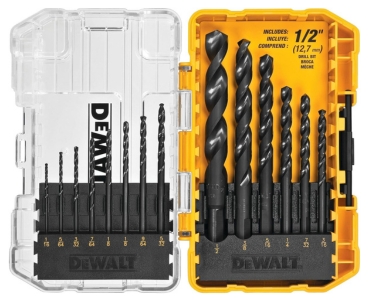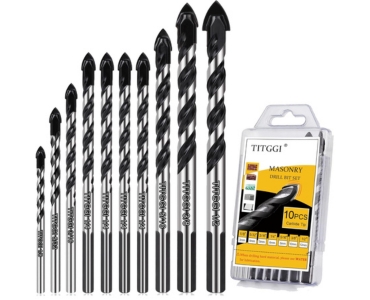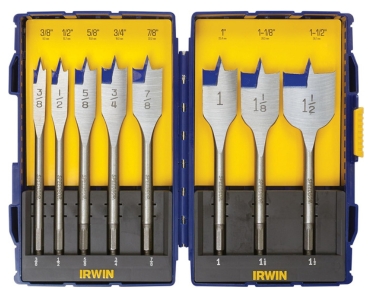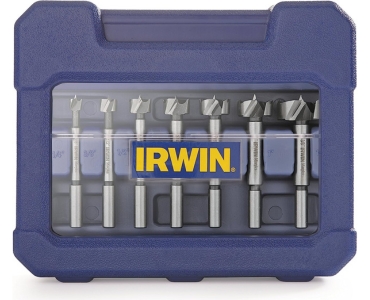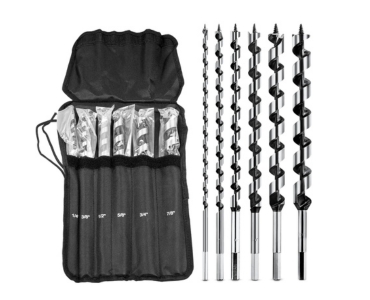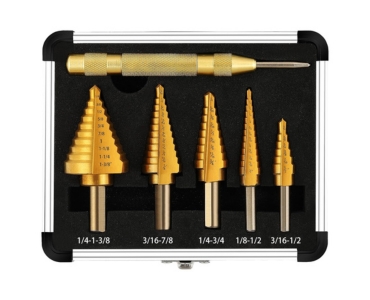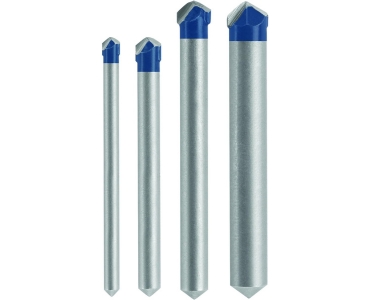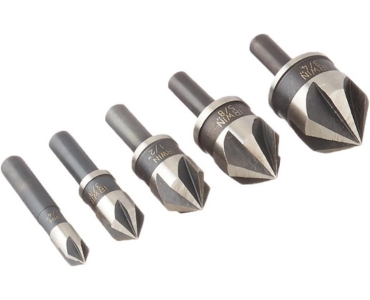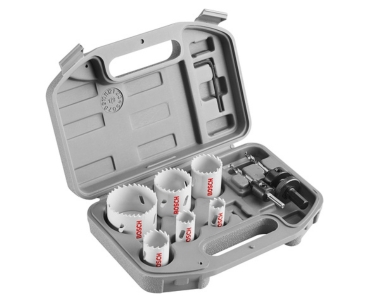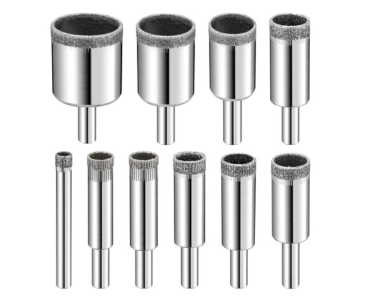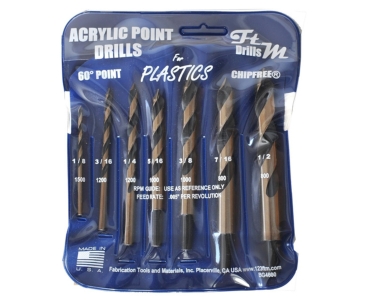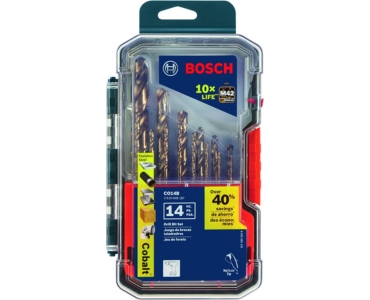When it comes to drilling holes, having the right tool for the job is essential. Choosing the appropriate drill bit can make all the difference in achieving clean, precise holes while minimizing the risk of damage to your materials or tools. In this comprehensive guide, we’ll explore the various types of drill bits available and help you understand which ones are best suited for your specific drilling needs.
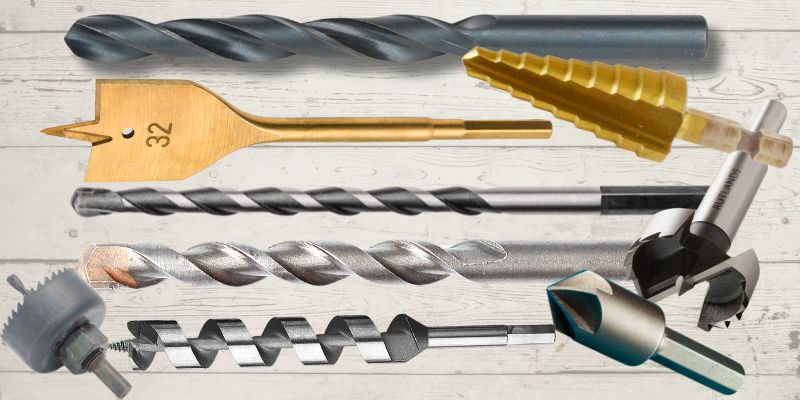
Before we explore the different types of drill bits, let’s take a quick look at what they’re made of and how they’re treated to improve their performance. This knowledge will help you understand why certain bits are better suited for specific tasks.
Drill Bit Materials and Coatings
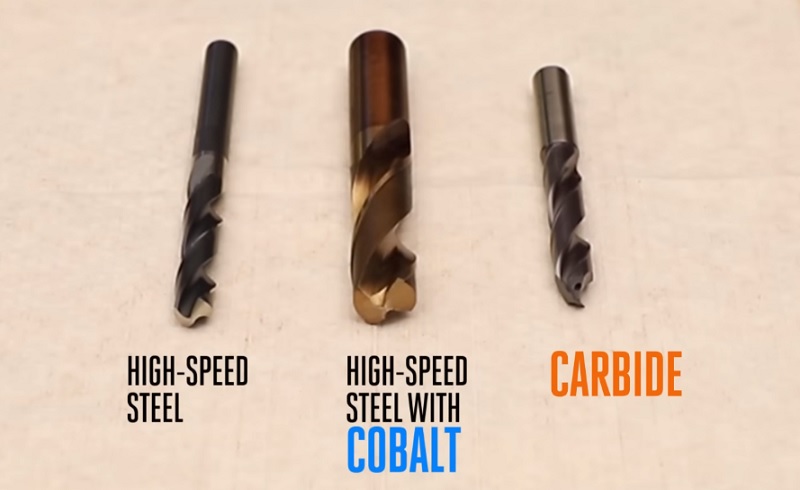
Have you ever wondered why some drill bits seem to last longer or work better than others? It all comes down to their materials and coatings.
Most drill bits you’ll come across are made of high-speed steel (HSS). It’s the popular choice because it’s tough enough for most jobs without breaking the bank. For more demanding tasks, you might need something stronger like cobalt steel, which can handle higher temperatures without losing its edge. When it comes to really tough materials like concrete or ceramics, carbide-tipped or even diamond-tipped bits are the go-to options.
But that’s not all – many drill bits have special coatings and finishes that enhance their performance:
- Bright Finish: This polished surface reduces friction and helps prevent chip buildup.
- Black Oxide: It improves heat dissipation and fights off corrosion.
- Titanium Nitride (TiN): This golden coating increases hardness and heat resistance.
- Titanium Carbonitride (TiCN): A multi-layer coating that offers excellent wear resistance and toughness.
- Titanium Aluminum Nitride (TiAlN): This super-tough coating is excellent for high-heat drilling.
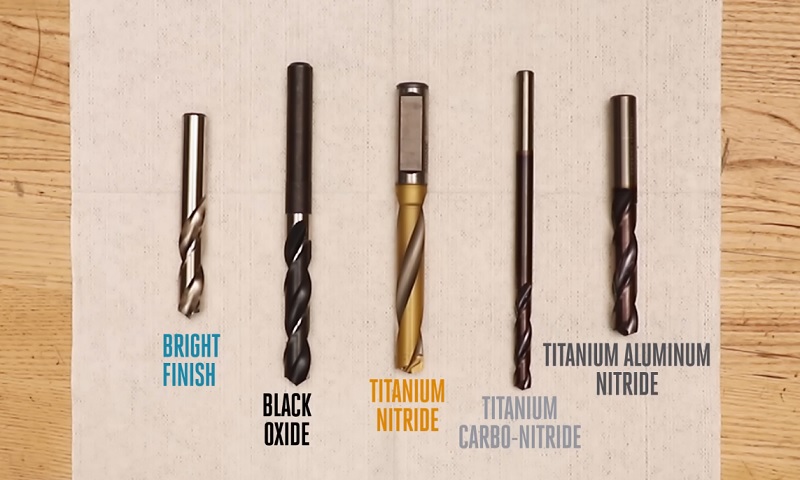
These coatings and finishes can significantly improve a bit’s lifespan and performance, but they usually come with a higher price tag. It’s all about finding the right balance for your project and budget.
Now that we understand the basics of drill bit materials, coatings, and finishes, let’s dive into the various types of drill bits and their specific uses.
Twist Drill Bits
Twist drill bits are the most common and versatile type of drill bit. They feature a cylindrical shaft with spiral flutes running along the length of the bit. These flutes are responsible for removing debris from the hole as you drill, keeping the bit cool and allowing for a cleaner cut. Twist drill bits are suitable for a wide range of materials, including wood, metal, plastic, and even some softer masonry materials.
One of the main advantages of twist drill bits is their availability in a wide range of sizes and lengths. They can be found in diameters ranging from less than 1/16 inch to over 1 inch, and lengths varying from a few inches to several feet. This versatility makes them a go-to choice for many drilling applications.
However, twist drill bits do have some limitations. They can sometimes cause splintering when drilling into wood, particularly when exiting the material. Additionally, they may not be the best choice for drilling large diameter holes, as they can be prone to wandering or producing less than perfectly round holes.
Masonry Drill Bits
When it comes to drilling into tough materials like concrete, brick, or stone, masonry drill bits are the way to go. These bits are designed with a carbide tip that is harder and more wear-resistant than the steel used in standard twist drill bits. The carbide tip allows the bit to grind through the masonry material without wearing down quickly.
Masonry drill bits are available in two main varieties: carbide-tipped and regular masonry bits. Carbide-tipped bits are more expensive but offer superior durability and performance, especially when drilling into harder masonry materials. Regular masonry bits, on the other hand, are more affordable and suitable for occasional use or softer masonry materials.
One disadvantage of masonry drill bits is that they are not designed for use with wood or metal. Using a masonry bit on these materials can result in poor hole quality and may even damage the bit. Additionally, drilling into masonry requires the use of a hammer drill or a drill with a hammer function, as the bit relies on a combination of rotational and hammering action to penetrate the material.
Spade Bits
Spade bits, also known as paddle bits, are designed for drilling large diameter holes in wood and soft plastics. They have a flat, spade-shaped blade with a sharp point at the center, which allows them to quickly bore through material. Spade bits are available in a range of sizes, typically from 1/4 inch to 1-1/2 inches in diameter.
One of the main advantages of spade bits is their ability to drill large holes quickly and efficiently. They are also relatively inexpensive compared to other large diameter drill bits. However, spade bits can cause significant splintering, especially when exiting the material. They also produce a fairly rough hole, which may require additional sanding or finishing work.
Spade bits come in two main shank styles: a straight shank that can be used with any standard drill chuck, and a hexagonal shank that is designed for use with quick-change chucks or impact drivers.
Forstner Bits
Forstner bits are another type of drill bit designed for drilling large, clean holes in wood and wood-based materials like MDF. They have a cylindrical blade with a sharp rim and a small center point. Unlike spade bits, Forstner bits cut a very clean, flat-bottomed hole with minimal splintering or tearout.
One unique feature of Forstner bits is their ability to drill overlapping holes or holes at the edge of a workpiece without wandering. This makes them a popular choice for drilling hinge recesses, dowel holes, and other precise woodworking applications.
However, Forstner bits do have some drawbacks. They are generally more expensive than spade bits and require more force to push through the material. They also have a tendency to heat up quickly, which can cause them to dull or burn the wood if not used carefully.
Auger Bits
Auger bits are a type of drill bit designed for drilling deep, clean holes in wood. They have a screw-like tip with a sharp cutting edge that pulls the bit into the material as it rotates. This self-feeding action allows auger bits to drill quickly and with minimal effort from the user.
Auger bits are available in a range of sizes, typically from 1/4 inch to 1-1/2 inches in diameter, and can drill holes up to several feet deep. They are commonly used for drilling holes for electrical wiring, plumbing, or other applications where a deep, clean hole is required.
One advantage of auger bits over spade bits or Forstner bits is their ability to clear chips and debris from the hole as they drill. This helps to prevent clogging and allows for a smoother, more efficient drilling process. However, auger bits can be more expensive than other types of drill bits and may not be suitable for all drilling applications.
Read Here: Best Cordless Drill for Ice Auger
Step Drill Bits
Step drill bits, also known as unibit or cone drill bits, are designed for drilling multiple sizes of holes in thin metal, plastic, or wood. They have a conical shape with multiple steps of increasing diameter, allowing you to drill a range of hole sizes with a single bit.
Step drill bits are commonly used in electrical and metalworking applications, such as drilling holes for conduit or creating holes for rivets or screws. They are particularly useful when you need to enlarge an existing hole or create a stepped hole for countersinking screws.
One of the main advantages of step drill bits is their versatility. With a single bit, you can drill a range of hole sizes, reducing the need for multiple drill bits. They also produce clean, burr-free holes in metal, which can save time and effort in post-drilling cleanup.
However, step drill bits can be more expensive than standard twist drill bits and may not be suitable for drilling very deep holes or holes in thick materials.
Tile Drill Bits
Drilling through tile, ceramic, glass, or porcelain requires a specialized drill bit to prevent cracking or shattering the material. Tile drill bits are designed with a spear-shaped carbide tip that helps to prevent the bit from wandering or slipping on the smooth surface of the tile.
When using a tile drill bit, it’s essential to start drilling slowly and apply gentle pressure until the bit penetrates the glaze. Once through the glaze, you can increase the speed and pressure slightly to drill through the substrate. It’s also crucial to use water to keep the bit and the material cool during drilling. This can be done by using a spray bottle, a sponge, or a specialized cooling system.
One drawback of tile drill bits is that they can wear out quickly, especially when drilling through harder materials like porcelain. It’s important to replace the bit as soon as it shows signs of wear to avoid damaging the material or the drill.
Countersink Bits
Countersink bits are used to create a conical recess around the top of a hole, allowing the head of a screw or bolt to sit flush with the surface of the material. They are commonly used in woodworking, metalworking, and construction applications where a neat, professional finish is desired.
Most countersink bits have a built-in pilot bit that drills the initial hole, followed by a conical cutter that creates the countersink. This design helps to ensure that the countersink is perfectly centered over the hole. Some countersink bits also have adjustable depth stops, allowing you to control the depth of the countersink.
One thing to keep in mind when using a countersink bit is that the size of the pilot bit and the countersink must match the size of the screw or bolt being used. Using the wrong size can result in a poor fit or an oversized hole.
Hole Saw Bits
Hole saw bits are designed for drilling large diameter holes in wood, metal, plastic, or other materials. They consist of a cylindrical saw blade with a pilot drill bit in the center. The pilot bit helps to guide the saw blade and keep it centered during drilling.
Hole saw bits are available in a wide range of sizes, typically from 3/4 inch to 6 inches in diameter. They are commonly used for drilling holes for plumbing, electrical fixtures, or other applications where a large, clean hole is required.
One advantage of hole saw bits is their ability to drill through thicker materials than many other types of drill bits. However, they can be prone to overheating, especially when drilling through metal. It’s important to use a cutting fluid or lubricant to keep the bit cool and prevent damage to the material or the bit.
Hole saw bits also require the use of an arbor, which is a shank that fits into the drill chuck and holds the hole saw in place. Some hole saws come with a built-in arbor, while others require a separate arbor that must be purchased separately.
Specialty Drill Bits
In addition to the main types of drill bits discussed above, there are also several specialty bits designed for specific materials or applications. These include:
Glass Drill Bits: These bits coated with diamond and are designed for drilling through glass or ceramic materials without cracking or shattering.
Plastic Drill Bits: These bits have a special flute design that helps to prevent the plastic from melting or deforming during drilling.
Metal-Specific Drill Bits: Cobalt and titanium drill bits are designed for drilling through hard metals like stainless steel or cast iron. They are more heat-resistant and wear-resistant than standard high-speed steel bits.
Read About: SDS Drill Bits
Drill Bit Maintenance and Best Practices
To get the most out of your drill bits and ensure their longevity, it’s important to follow some basic maintenance and best practices:
Proper Storage: Store your drill bits in a dry, organized manner to prevent them from getting lost or damaged. A drill bit organizer or index can be a helpful tool for keeping your bits sorted by size and type.
Cleaning and Sharpening: Regularly clean your drill bits to remove any build-up of debris or material. For dull bits, you can use a drill bit sharpener to restore their cutting edge. Sharpening your bits can help to prolong their life and improve their performance.
Avoiding Common Mistakes: Some common mistakes to avoid when using drill bits include applying too much pressure, using the wrong speed, or using a bit that is dull or damaged. These mistakes can result in poor hole quality, damage to the material, or even injury to the user.
Safety Precautions: Always wear safety glasses and follow proper safety procedures when using drill bits. Avoid wearing loose clothing or jewelry that could get caught in the drill, and make sure to secure your workpiece before drilling.
Final Thoughts
Choosing the right drill bit for your project is essential for achieving the best results and avoiding damage or injury. By understanding the different types of drill bits available and their specific uses, you can select the appropriate bit for your needs. Whether you’re drilling through wood, metal, plastic, or masonry, there is a drill bit designed to make the job easier and more efficient. Remember to follow proper maintenance and safety practices to ensure the longevity and performance of your drill bits. With the right knowledge and tools, you’ll be able to tackle any drilling project with confidence.

